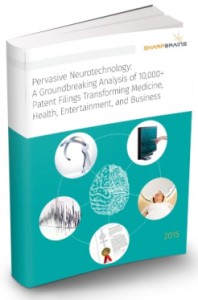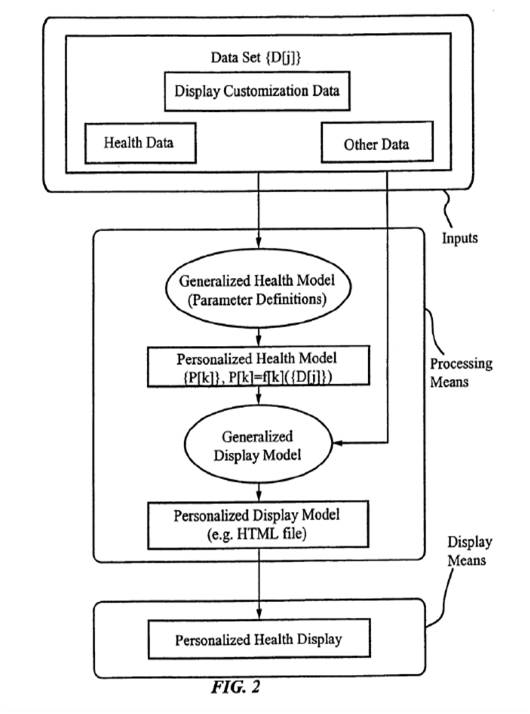Flash back: Key patent for the personalized display of health information
Today we highlight a prescient digital health patent by Health Hero Network, now part of the Bosch Group (As mentioned, we are featuring a foundational Pervasive Neurotech patent a day, from older to newer by issue date)
U.S. Patent No. 7,555,436: Personalized display of health information
- Assignee(s): Health Hero Network, Inc.
- Inventor(s): Stephen J. Brown
- Technology Category: Neuro-monitoring
- Issue Date: June 30, 2009
SharpBrains’ Take:
With priority claim dating back to 1997, the ‘436 patent discloses health assessment techniques that were uncommon at the time of filing but are now taken for granted, such as the digitization and coordination of health records, remote patient-healthcare provider communications and intuitive means for understanding personal medical information. The ‘436 patent describes managing several aspects of health, including mental conditions such as attention deficit disorder. The assignee of the ‘436 patent, Health Hero Network, Inc., has filed a number of patent applications relating to mental health and patient record keeping. Although several of these patents are recently expired, the ‘436 patent represents an illustrative filing by the patentee. Despite a relative short remaining life of the patent (the patent would be expired at the time of this writing but for a patent adjustment term granted by the USPTO), the early disclosure of important aspects of modern healthcare record keeping and the specification illustrating representative activity of a prominent patentee in the field are among the factors making the ‘436 patent a key non-invasive neurotechnology patent.
Abstract:
Delivery of health information to a patient suffering from a chronic condition is personalized by displaying the health information directly on a customized image of a body. The patient’s medical record, standards of care for the condition, prescribed treatments, and patient input are applied to a generalized health model of a disease to generate a personalized health model of the patient. The personalized health model comprises an HTML file encoding an image map of a body. The body image illustrates the health condition of the individual patient. Preferably, data is collected from health provider sources and stored in a database on a server at a service provider site. The data is processed at the server, and is displayed in the patient’s home using a TV connected to a multimedia processor. The multimedia processor connects the television set to a communications network such as the Internet. Applications include preventive care of chronic diseases such as diabetes and asthma.
Illustrative Claim 1. A system for displaying personal health information comprising:
- a computer coupled to one or more databases containing:
- health information,
- other information from a health provider, and
- other inputs relevant to an individual;
- the computer executing a software program configured to generate a personalized health model by combining personalized data from the one or more databases with a generalized model; and
- a display coupled to a multimedia processor and to the computer over a network, wherein said display
- presents personalized health information in the form of a body image corresponding to a plurality of body parts of a person,
- highlights one of the body parts when an image section corresponding to the body part has information to be displayed, and
- displays current and historical conditions for the body part in response to activating said image section;
- the computer executing a logbook module with one or more of the following data elements selected from the group consisting of medication data, symptoms, events, treatment plans, lab tests, diets, appointment schedule, checkup schedule.
 To learn more about market data, trends and leading companies in the digital brain health space –digital platforms for brain/ cognitive assessment, monitoring and enhancement– check out this market report. To learn more about our analysis of 10,000+ patent filings, check out this IP & innovation neurotech report.
To learn more about market data, trends and leading companies in the digital brain health space –digital platforms for brain/ cognitive assessment, monitoring and enhancement– check out this market report. To learn more about our analysis of 10,000+ patent filings, check out this IP & innovation neurotech report.



